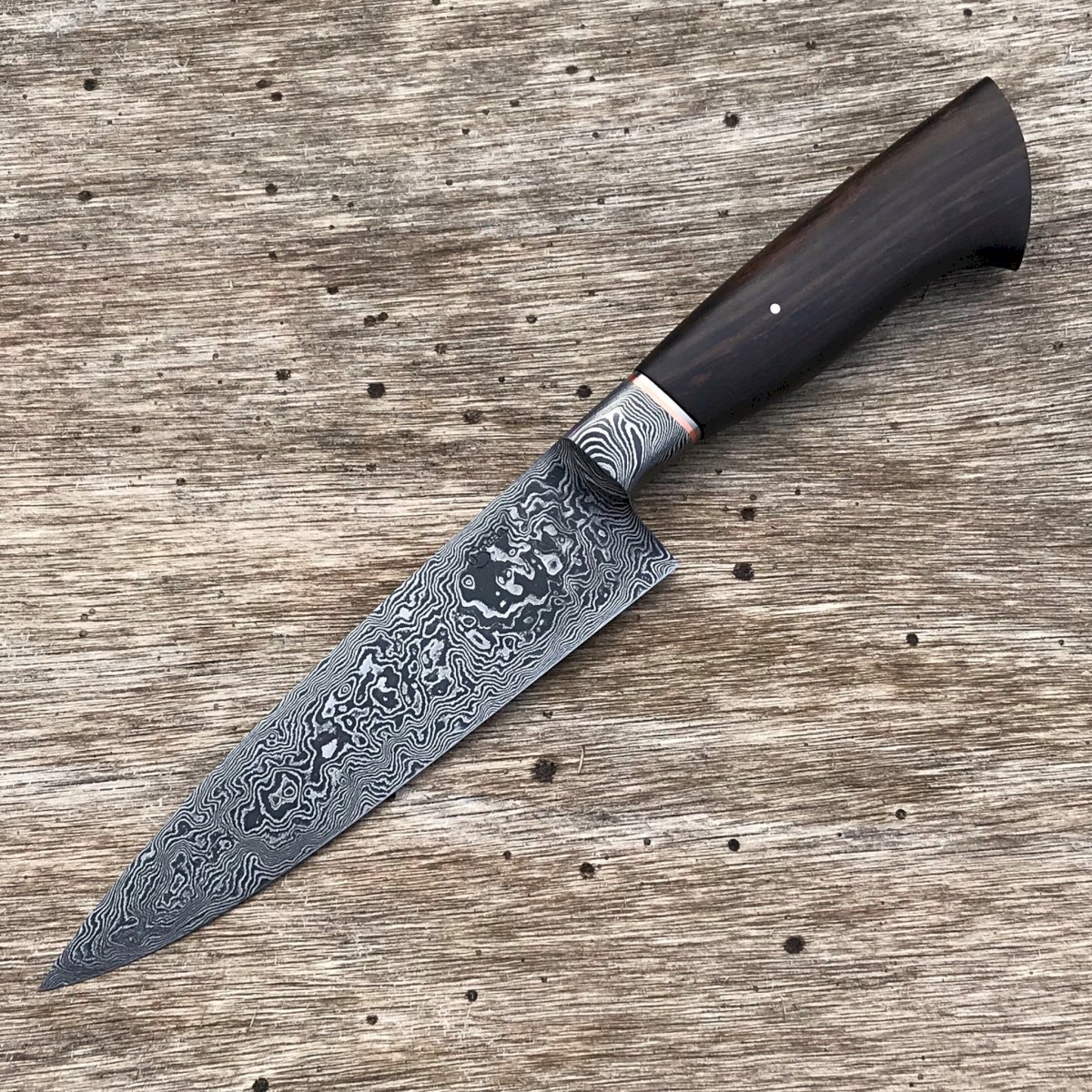All About Damascus
June 27, 2020
Ben Breda makes knives with Damascus blades in his Hope, Maine forge. We wanted to share more about the process and history of Damascus.

Modern Damascus steel is produced by a technique called pattern-welding in which iron and steel are layered and hammered together at extreme temperatures to form a welded bond between the two metals. A flux is used to seal the joint of the metal piece to keep it from oxidizing. The metals are heated, folded, and hammered and at the end filed down to create the characteristic layered, watery pattern of Damascus steel. This steel, most commonly forged into knives and swords, is famed for its flexibility, strength, and balance while maintaining a sharp and resilient edge. It has also been said to be resistant to shattering. Artist Ben Breda uses this pattern-welding technique to produce beautiful knives, in this one shown here, made with 176 layers of steel.
The history of Damascus steel is a complex one. The original method for producing Damascus steel, a casting technique, was lost because the wootz steel from which it was cast has been lost. Wootz is a type of steel that was originally made in India well over 2,000 years ago. A traditional Indian smelting process created wootz steel ingots composed of a variety of impurities, such as tungsten and vanadium, and extremely high in carbon content. This smelting process, along with many rounds of layering of the steel, resulted in the traditional Damascus steel. The weapons and other items cast from wootz steel rose in popularity in the 3rd and 4th centuries; most were sold and traded in Damascus (in what is modern-day Syria), where the steel received its name.
However, in the 1700s, imports of wootz steel from India to the rest of the world slowed and were cut off as borders changed due to war, so the techniques for making wootz steel were eventually lost. Older items made by the original cast process survive to modern-day. Experts have tried to reverse engineer the surviving wootz steel to discover the process. In 1981, two scientists stumbled across a likely answer, though it is difficult to replicate the exact Indian technique as many researchers add their own “twist” to the steel.
sources:
https://www.thoughtco.com/damascus-steel-facts-608458
https://fnsharp.com/blog/what-is-damascus-steel/
Related posts:
Ask an Artist: Ben BredaShareable link to this blog entry:
http://www.thepagegallery.com/blog/all-about-damascus